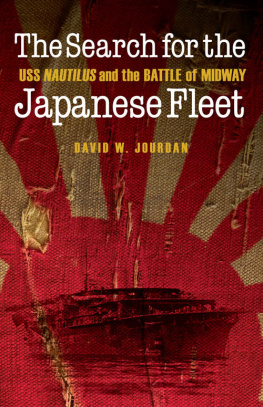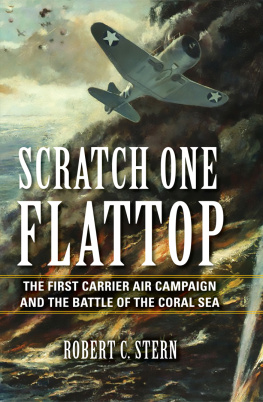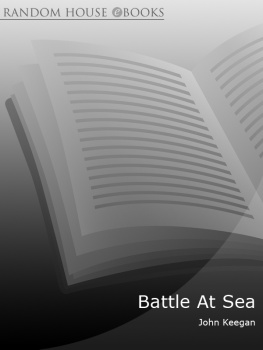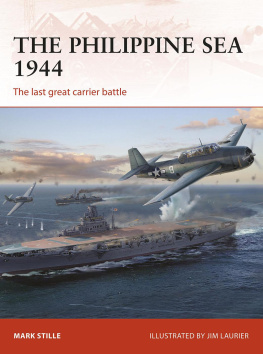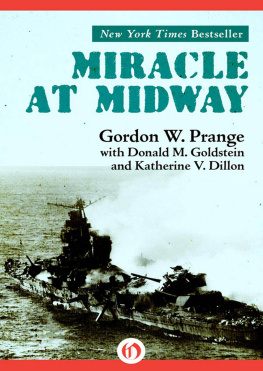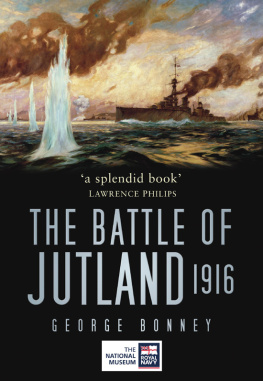A superb combination of history, strategy, tactics, and science, David Jourdans new treatment of the epic Battle of Midway is a masterpiece. He takes us deepboth literally and figurativelyinto acoustic exploration at sea, unlocks the mysteries of the undersea portion of Midway, and tells a gripping tale of war at sea in what many believe was the pivotal battle of the Pacific theater of World War II. An instant classic!
Adm. James Stavridis, USN (Ret.), former supreme Allied commander at NATO , 200913
David W. Jourdans superb study of the Battle of Midway reexamines the crucial strategic and tactical decisions made in the battle and, perhaps just as important, puts a face on the decision makers and combatants. It was a battle America had to win, but reading The Search for the Japanese Fleet made me acutely aware of the human cost of the battle for Japan. And to have this military study folded into a heart-pounding adventure storywell, hats off to David Jourdan!
Randy Roberts, Distinguished Professor of History at Purdue University
David Jourdan and his team discovered the sunken Japanese submarine I-52 and found the lost Israeli submarine Dakar, but could they find the Japanese carrier Kaga, sunk at the Battle of Midway, when, despite the best efforts of others, its location remained a mystery? Two submarines, incredibly sharing the hull number 168, played key roles in the battle. One was Japanese, I-168 , whose torpedoes sent the wounded Yorktown into the deep. The other was the American Nautilus ( SS-168 ), which played a crucial role during the battle itself, and again, fifty-seven years later, in the hunt for Kaga. Jourdan brings both to life in this fascinating account.
Vice Admiral George W. Emery, USN (Ret.), former commander U.S. and Allied Submarine Commands, Atlantic
The Search for the Japanese Fleet
The Search for the Japanese Fleet
USS Nautilus and the Battle of Midway
David W. Jourdan
Foreword by Philip G. Renaud
Potomac Books
An imprint of the University of Nebraska Press
2015 by David W. Jourdan
Foreword 2015 by the Board of Regents of the University of Nebraska
Cover image: from the interior and iStockphoto.com/Photolyric
Author photo courtesy of Berri Kramer
All rights reserved. Potomac Books is an imprint of the University of Nebraska Press.
Library of Congress Cataloging-in-Publication Data
Jourdan, David W.
The search for the Japanese fleet: USS Nautilus and the Battle of Midway / David W. Jourdan; foreword by Philip G. Renaud.
pages cm
Includes bibliographical references and index.
ISBN 978-1-61234-716-5 (cloth: alk. paper)
ISBN 978-1-61234-755-4 (epub)
ISBN 978-1-61234-756-1 (mobi)
ISBN 978-1-61234-757-8 (pdf)
1. Midway, Battle of, 1942. 2. Nautilus (Submarine: SS -168) 3. World War, 19391945Naval operationsSubmarine. 4. World War, 19391945Naval operations, American. I. Title. II. Title: USS Nautilus and the Battle of Midway.
D 774. M 5 J 68 2015
940.54'26699dc23
2014048457
The publisher does not have any control over and does not assume any responsibility for author or third-party websites or their content.
Contents
I N THE LATE 1700s, President George Washington planted the seed of isolationism by advocating that America keep a safe distance from European wars and politics. Throughout much of the nineteenth century, the huge Atlantic and Pacific oceans protected America with natural moatsallowing us to live free in our castle and remain aloof to European conflicts. However, World War I proved too big to avoid, and President Woodrow Wilson made the claim that American intervention was necessary to make the world safe for democracy. Beginning in the spring of 1917, America would send over 2 million men to Europe. Greatly disturbing Americas collective psyche, over one hundred thousand of our brave men never returned home.
Grieving from the suffering of World War I, America entrenched back to isolationism and again vowed to stay away from world politics. That all changed on December 7, 1941, with the surprise Japanese attack on the U.S. naval base at Pearl Harbor, Hawaii. The damage and death inflicted by that attack would wake the sleeping giant and bring the full potential of Americas industrial capability to bear on the world struggle.
In the months following Pearl Harbor, Japan bullied America and its Allies with its naval superiority by choosing where and when to attack, occupying many strategic islands throughout the Pacific theater. It was not until the Japanese attempted invasion of Midway that their advance was halted. In The Search for the Japanese Fleet: USS Nautilus and the Battle of Midway, David Jourdan does a masterful job bringing to life the battle that is commonly recognized as marking the strategic turning point of the Pacific war.
Juxtaposing modern-day search and discovery operations for the sunken Japanese carrier Kaga with the heroic actions taken by the crew of the American submarine USS Nautilus, David weaves a rich story of intertwined adventures in history. This book will time-travel you to 1942, where you will envision being in the conning tower of the USS Nautilus, experiencing the chaos of war, and then take you to 1999, where you will be immersed in the operations center of the research vessel Melville on an adventure seeking a critical bit of sunken history.
It was an honor for me to play a small role in the search for Kaga, but Im more honored by being able to call David Jourdan a true friend. Congratulations on your great literary work, David. To the rest of youdive in and enjoy the tale!
Capt. Philip G. Renaud, USN (ret.)
Executive Director, Living Oceans Foundation
Former Commanding Officer, Naval Oceanographic Office
T HE BATTLE OF M IDWAY was a momentous and consequential event in the history of World War II, an extraordinarily complicated affair that involved hundreds of ships, thousands of men, millions of square miles of ocean, and countless tales of heroism, tragedy, victory, and defeat. It is a model study of strategy, tactics, leadership, and the art of warfare. What began as a one-sided match in favor of the Japanese ended as a lopsided outcome in favor of the Americans. There were many heroes, and a few villains. The battle involved essentials of intelligence, engineering, planning, decision making, training, and organization. It is a rich, rich story, and a very difficult tale to tell.
Many historians, popular writers, and filmmakers over the years have done a fine job of relating the complicated events of Midway, and I had no intention of repeating or competing with their efforts. I have attempted to tell the story from a different and somewhat narrow perspective, drawing on my experience as a submariner and the detailed collection of written materials and oral interviews the team at my company Nauticos was able to gather regarding the submarine Nautilus. I argue that Nautilus and her crew played a key role in the battle, focusing on relating their role more thoroughly than I have seen in earlier writings. Though this is not a rigorous history book, I have depended on reliable historical sources to write it. When I color the history a bit, creating fictionalized dialogue, I have drawn from documented procedures and oral descriptions of events to ensure authenticity. See A Note on References and Selected Bibliography for a few more comments on this.
Woven into this historical tale is the story of the Nauticos search and discovery of the remains of Kaga, one of the great ships sunk at the battle. The war patrol of

